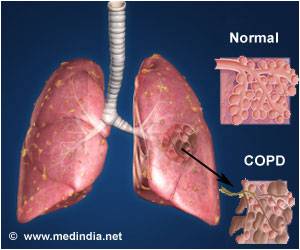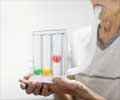Home-based pulmonary rehabilitation may be equally effective in improving fitness and quality of life as a traditional center-based program for COPD patients.

‘Home-based pulmonary rehabilitation may be equally effective in improving fitness and quality of life as a traditional center-based program for chronic obstructive pulmonary disease patients.’





According to Dr. Holland, a number of factors contribute to that fact, including lack of programs and inadequate or no medical reimbursement. Another factor, she said, is that for people who are short of breath, traveling to a hospital or other medical facility for rehabilitation on a regular basis may seem impossible. Dr. Holland and her colleagues created a unique eight-week at-home program and compared the results with their hospital's traditional outpatient program in a randomized controlled trial of 166 patients.
After an initial visit from a physiotherapist, those in the home program decided on their own exercise program and reviewed their fitness goals and progress on a weekly call with a health care professional. The caller was trained to motivate patients by asking questions that helped patients focus on what improvements were important to them. Those in the traditional program attended twice weekly sessions at the hospital. Each session included group exercise and education.
At the end of the pulmonary rehabilitation and a year later, blinded assessors measured change in six-minute walk distance (6MWD), the primary outcome. Patients also completed validated questionnaires to measure changes in dyspnea-related quality of life (Chronic Respiratory Questionnaire) and self-efficacy (Pulmonary Rehabilitation Adapted Index of Self-Efficacy, or PRAISE).
Results on all measures were comparable between participants in the two study arms immediately following program completion. Among home-based participants, 6MWD increased by 28 meters, compared to 29 meters for center-based participants. Neither group, however, retained primary or secondary gains 12 months later - a finding consistent with previous studies. Researchers also tracked hospital admissions and health care utilization and are currently analyzing that data.
Advertisement
"We would need appropriate funding models that recognize a telephone call from a health care professional can be a treatment," she said. "We're not there yet in Australia, and I suspect in most countries around the world."
Advertisement












